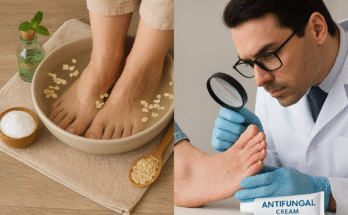Why Do Ingrown Hairs Happen? Causes, Prevention, and Solutions
Ingrown hairs, medically known as ingrown hairs or pseudofolliculitis, occur when hair curls back or grows sideways into the skin, creating raised red bumps. These bumps can become itchy, infected, or even fill with pus, leading to painful sores. Over time, repeated irritation may cause skin discoloration or scarring, especially if you scratch or try to pluck the hair out. While ingrown hairs often appear in areas where hair is frequently removed—like the face and neck in men, or the legs, underarms, and bikini area in women—they can affect anyone.
Who’s Most at Risk?
People with thick, coarse, or tightly curled hair are more prone to ingrown hairs. This is because curly hair tends to bend back into the skin after shaving or trimming. Other factors include:
- Hormonal imbalances: High levels of sex hormones can stimulate excessive hair growth, making ingrown hairs more likely.
- Shaving habits: Pulling the skin taut while shaving can cause hair to retract and re-enter the skin. Shaving against the grain is a common culprit.
- Hair removal methods: Plucking, waxing, or threading can disrupt hair follicles, prompting inward growth.
- Ethnicity: African Americans, Latinos, and those with highly textured hair are more susceptible to pseudofolliculitis barbae, a chronic inflammatory condition triggered by shaving or plucking.
Prevention Tips: Your Defense Plan
- Exfoliate gently: Slough off dead skin cells and unclog pores with a mild scrub or loofah before shaving. This helps hairs grow outward, not inward.
- Dry brushing: Use a firm-bristled brush in circular motions to buff away dead skin and keep follicles clear.
- Lubricate wisely: Opt for a fragrance-free shaving gel or cream to reduce friction. Avoid harsh chemicals—natural or hypoallergenic products are best for sensitive skin.
- Choose your razor carefully: Dull or rusty blades tug at hair, increasing irritation. Replace blades regularly and use a single-blade razor to minimize cuts.
- Shave with the grain: Glide the razor in the direction of hair growth to reduce the risk of hairs curling back.
- Take shaving breaks: Let hair grow out occasionally to give your skin a rest.
Treatment: From Home Remedies to Medical Fixes
Most ingrown hairs resolve on their own, but stubborn cases may need extra care:
Medical Solutions
- Topical creams: Retinoids like tretinoin can unclog pores and reduce trapped hairs. Hydrocortisone creams soothe inflammation.
- Antibiotics: Oral or topical antibiotics tackle infections causing pustules or abscesses.
- Professional extraction: A dermatologist can safely remove embedded hairs with a sterile tool.
- Permanent hair removal: Laser therapy or electrolysis destroys follicles, preventing regrowth.
DIY Remedies
- Warm compress: Soften the skin and ease inflammation with a warm, damp cloth.
- Tea tree oil: Dilute this natural antiseptic with water to fight bacteria and calm redness.
- Sugar scrub: Mix sugar with olive oil or honey for a moisturizing exfoliant that lifts trapped hairs.
- Baking soda paste: Combine 1 tbsp baking soda with water to gently exfoliate and reduce swelling.
Final Thoughts
Ingrown hairs are a common nuisance, but with the right techniques, they’re manageable. Embrace gentle skincare, smart shaving habits, and a touch of patience—your skin will thank you! 🌟




